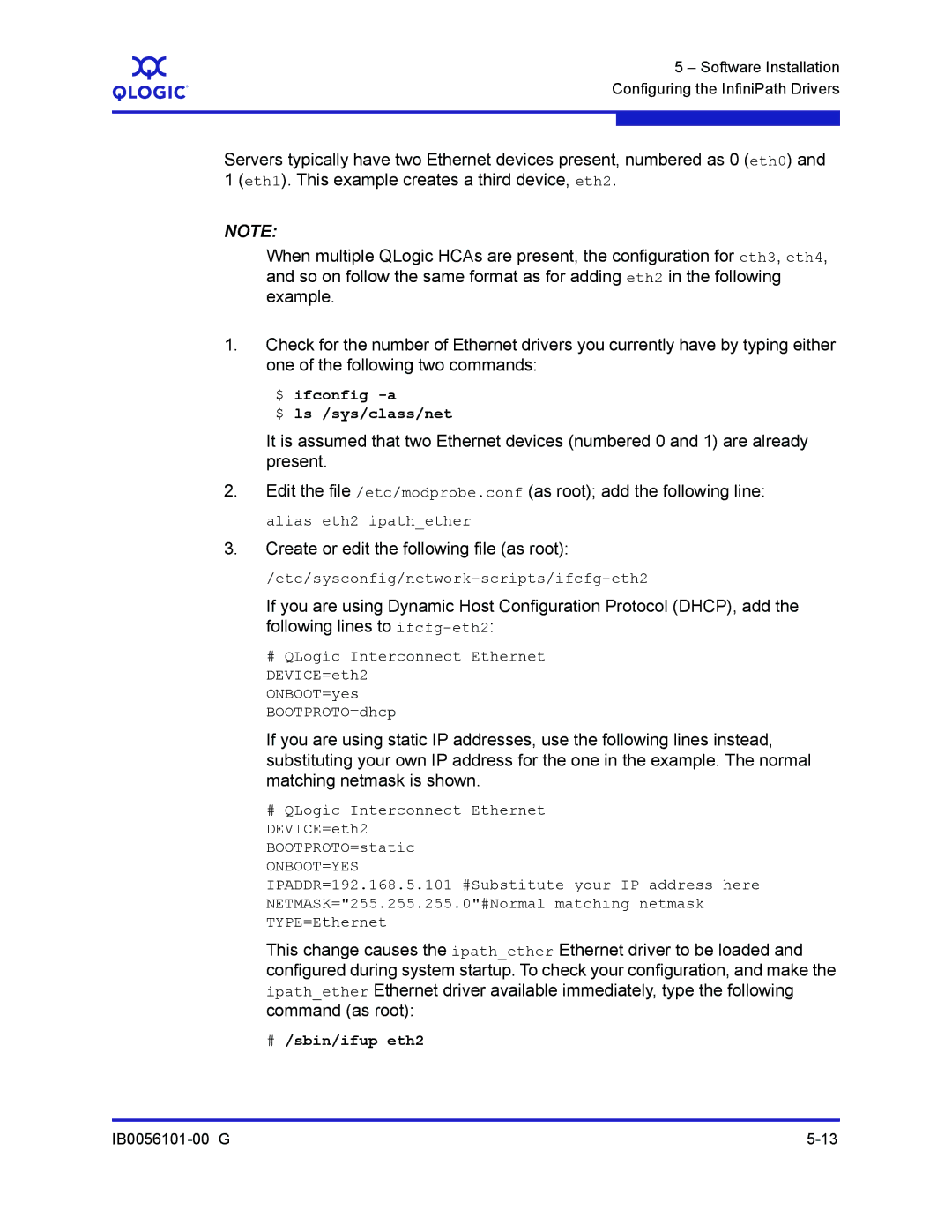
A
5 – Software Installation Configuring the InfiniPath Drivers
Servers typically have two Ethernet devices present, numbered as 0 (eth0) and 1 (eth1). This example creates a third device, eth2.
NOTE:
When multiple QLogic HCAs are present, the configuration for eth3, eth4, and so on follow the same format as for adding eth2 in the following example.
1.Check for the number of Ethernet drivers you currently have by typing either one of the following two commands:
$ ifconfig
$ ls /sys/class/net
It is assumed that two Ethernet devices (numbered 0 and 1) are already present.
2.Edit the file /etc/modprobe.conf (as root); add the following line: alias eth2 ipath_ether
3.Create or edit the following file (as root):
/etc/sysconfig/network-scripts/ifcfg-eth2
If you are using Dynamic Host Configuration Protocol (DHCP), add the following lines to
#QLogic Interconnect Ethernet DEVICE=eth2
ONBOOT=yes
BOOTPROTO=dhcp
If you are using static IP addresses, use the following lines instead, substituting your own IP address for the one in the example. The normal matching netmask is shown.
#QLogic Interconnect Ethernet DEVICE=eth2 BOOTPROTO=static
ONBOOT=YES
IPADDR=192.168.5.101 #Substitute your IP address here NETMASK="255.255.255.0"#Normal matching netmask TYPE=Ethernet
This change causes the ipath_ether Ethernet driver to be loaded and configured during system startup. To check your configuration, and make the ipath_ether Ethernet driver available immediately, type the following command (as root):
# /sbin/ifup eth2
